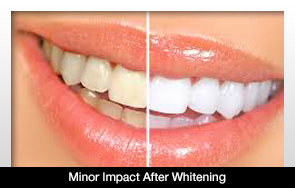Written by Dentistry TodayThursday, 28 March 2013 14:48
 |
Using remineralizing agents doesn’t necessarily help teeth recoup their enamel after whitening procedures.
A new study indicates that following in-office teeth whitening with 35 to 38 percent hydrogen peroxide, the teeth generally don’t regain their enamel.
There are several studies that show bleaching with large quantities of hydrogen peroxide can change the makeup of the enamel.
This information appears in Acta Odontologica Scandinvica.
To compile the data, the research team bleached 60 bovine incisors with hydrogen peroxide containing 35 percent calcium or calcium-free 35 percent hydrogen peroxide. The teeth were later exposed to artificial saliva, sodium fluoride gel or a nanohydroxyapatite-based agent.
The makeup of the enamel was then studied after 24 hours and 14 days after treatment. People that were exposed to the nanohydroxyapatite-based agent showed the highest microhardness after 24 hours. The microhardness level, however, was not the same after 14 days. Also, the morphology for all of the samples after 14 days showed many abnormalities.

